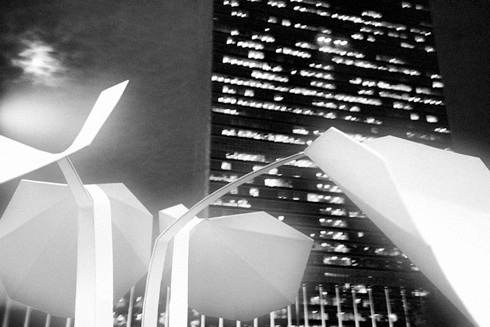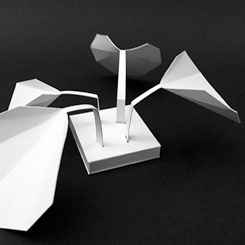Wild Ginger
Asarum Canadense
One of the plants exuded a mysterious light. Its total surface seemed to be treated with a self-luminescent coating that let it glow from the inside. The light changed very slowly over a long period of time and then suddenly lit in various bright colors. In the daytime this property was barely noticable, but once it was getting dark, the leaves and the whole sculpture shone so brightly, that even the nearby buildings were illuminated.
In a way, the light seemed to reflect the surroundings. The light intensity and color changed, as if the presence of people, the bustle on the street, had that impact on the sculpture.
Rockefeller Placa, 49th Street: In the daytime the glowing was barely noticable.
The light seemed to reflect the surroundings.
United Nations, Secretariat Building.

Wild Ginger (Asarum Canadense) in Soho, February 1980.
Original photo by Anita Boldt via google+.







Wild Ginger is a genus of low-growing herbs distributed
across the temperate zones of northern hemisphere, with
most species in East Asia and North America.
The plant is called Wild Ginger because the Rhizome tastes and smells similar to ginger root.
It had been used by Native Americans as a medicinal and useful herb: Against colds, headaches, scarlet, digestive problems and even against earache.
It was also taken as a contraceptive by women of many American tribes.
And it was used as an appetizing seasoning for meat or fish.
While it has been used as an herbal remedy, spice or drug for years, Wild Ginger contains the nephrotoxic and carcinogen aristolochic acid, why it is now classified as slightly toxic (and should not be consumed).
Sculpture garden, Whitney Museum, 1978.
Original photo by Hagen Stier via flickr.

